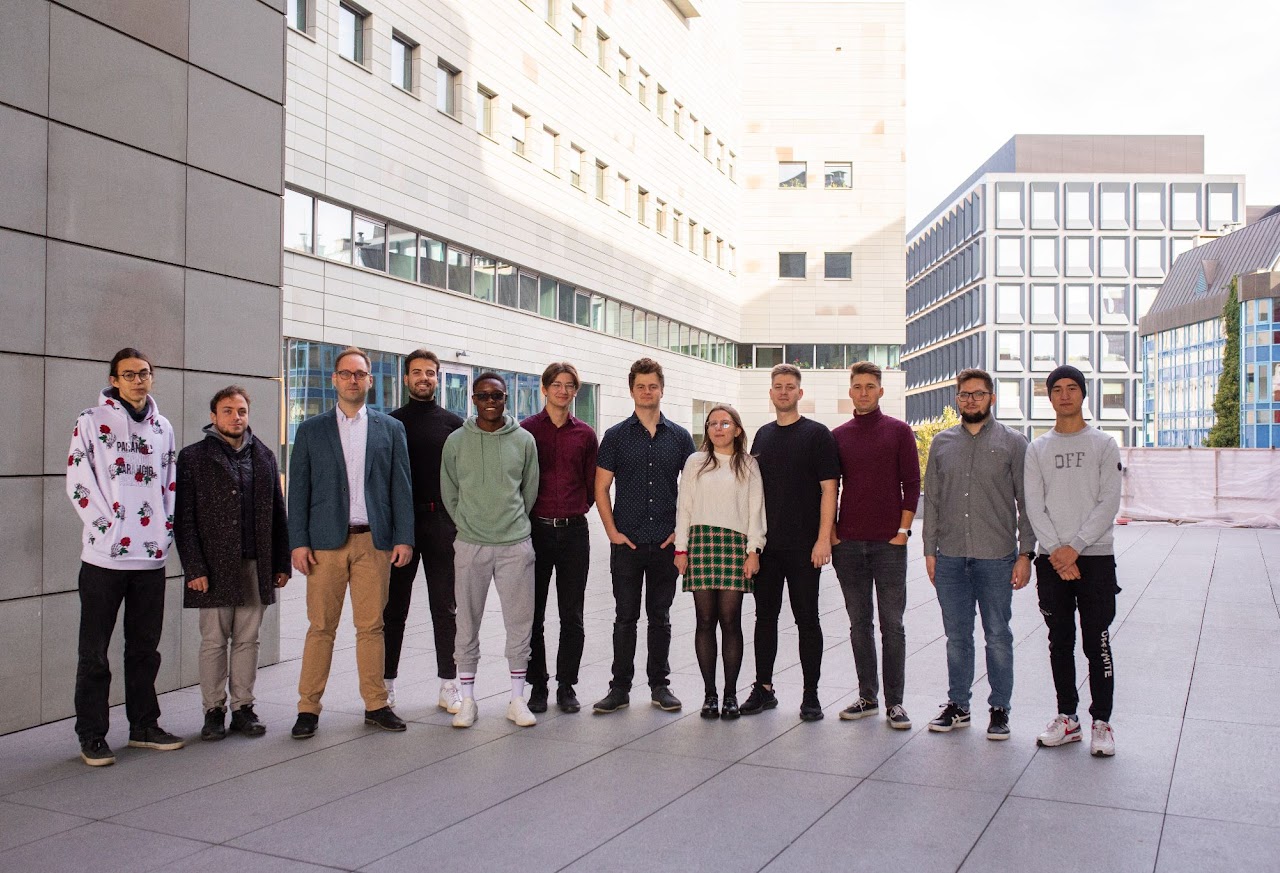
On the research of our chemists featured in Nature Synthesis
Molecular knots and links. While these objects are primarily of interest in mathematical knot theory, they have also captivated chemists, who designed and synthesised many molecules of nontrivial topology.
A recent study conducted by researchers from the Faculty of Chemistry of the University of Wrocław was published in Angewandte Chemie International Edition and quickly attracted the international scientific community. The impact of the work is a highlight article – an expert commentary published in Nature Synthesis.
But let us start at the beginning.
Tying one’s shoestrings is among the mundane daily tasks that we perform before leaving to work or University. Those of us whose job demands more formal attire should also prior to leaving the house, knot a tie or a stylish neckerchief. When we have to transport a package, securing it with a knot on a string ensures the safety of transport. Although these actions may seem insignificant and automatic, they in fact require a nontrivial operation, which results in an object, called a knot or link by mathematicians.
Knots and links are objects with much broader applications – we use them to fasten ropes in sailing, but also to create complex steel constructions. For climbers, tying the right knot provides safety against the fall, and surgeons use them to repair torn tissue. Jewellers use aesthetic knots in the creation of unique pieces of jewellery, while artists use them to weave elaborate motifs into macrame.
Throughout the ages, knots and links were mystically or symbolically significant. Such shaped amulets were found, among other places, in ancient Egypt. Tyet, also known as “the knot of Isis” dates back to approximately 1550-1275 BC. In Hinduism knot known as Shrivatsa symbolises the permeation of wisdom and compassion, unity and harmony of seemingly opposite forces. Meanwhile, the Celtic Tree of Life represented a connection between the world of the living and the spirit realm. The most famous of them all, a Gordian Knot, is so entrenched in our consciousness that to this day it is used as a description of a problem of intractable complexity, impossible to untie using conventional methods. Finally, two people tie a marriage knot in the presence of witnesses, pledging lifelong love and fidelity. Even today, some attribute magical power to knots and links and tie a red ribbon to a crib, for the protection against the “evil eye”. It is clear that knots and links fulfil not only a practical but also a technical and artistic role, which makes them an inseparable part of everyday life.
While these objects are primarily of interest in mathematical knot theory, they have also captivated chemists, who designed and synthesised many molecules of nontrivial topology. Catenates (chemical equivalents of links) and molecular knots today are no longer considered a mere scientific curiosity. They are increasingly being used to construct uncommon catalytics, ligands (compounds connecting the metal ions), or molecular machines – devices allowing to study of motion at a single-molecule level.
Most synthetic knots and links are constructed by using metal cations as elements organising molecules into proper topology, but at the same time, their presence causes the created structures to exhibit rotamer rigidity, which means that they remain relatively static. Molecules created in this way differ from the natural molecular knots and links, via the lack of elasticity, which in the case of knotted proteins and nucleic acids and organic molecules, enables chain-folding till the creation of proper topology. The team under dr hab. Bartosz Szyszko, professor of organic chemistry at the University of Wrocław – researcher from the Faculty of Chemistry, University of Wrocław, presented the method of creating metal-stabilised molecular knots and links, characterised by considerable elasticity. Application of the new type of building block allowed for the creation of new molecules exhibiting very dynamic behaviour, similar to that observed in the case of complex biomacromolecules or synthetic polymers.
According to professor Szyszko additional research in this field will allow to broader applications of molecular knots and links to construct original molecular machines, new catalysts, and also receptors – compounds which due to capability of adjusting host molecule to geometric dimensioning of the guest, will be able to hold inside them smaller molecules, by using the mechanism similar to one by which enzymes captures their substrates.
“What brings me particular joy, besides the interest of our work in the scientific community, is the fact that the core research was conducted by a very young researcher. Namely, doctoral student Aleksandra Sarwa, and one of the crucial results was achieved thanks to the involvement of undergraduate student Michał Sobieraj. This shows the tremendous potential possessed by our students and doctoral students, and in a broader perspective by research teams, which involve them in their research,” said Professor Szyszko.
Crucial to understanding the behaviour of our molecules was understanding their specific chemical structure, which was made possible thanks to longstanding cooperation with dr hab. Agatą Białońską – expert in X-ray crystallography from the Faculty of Chemistry.
The research also involved scientists from the Centre of New Technologies at the University of Warsaw. The result of collaboration between researchers from the University of Warsaw and the University of Wrocław has been published in “Angewandte Chemie”. Read More: Flexible links | University of Warsaw (UW.EDU.PL)
Original article in Angewandte Chemie International Edition
Translated by Marcin Dolata (student of English Studies at the University of Wrocław) as part of the translation practice.



